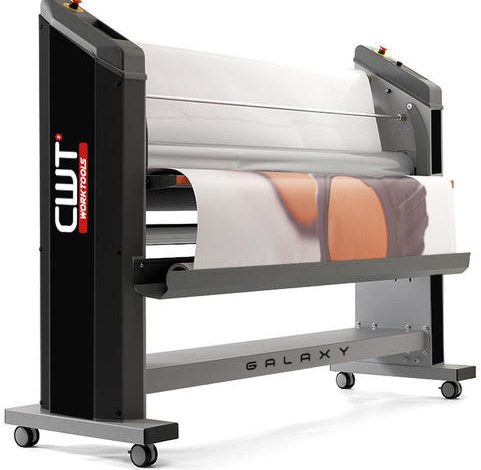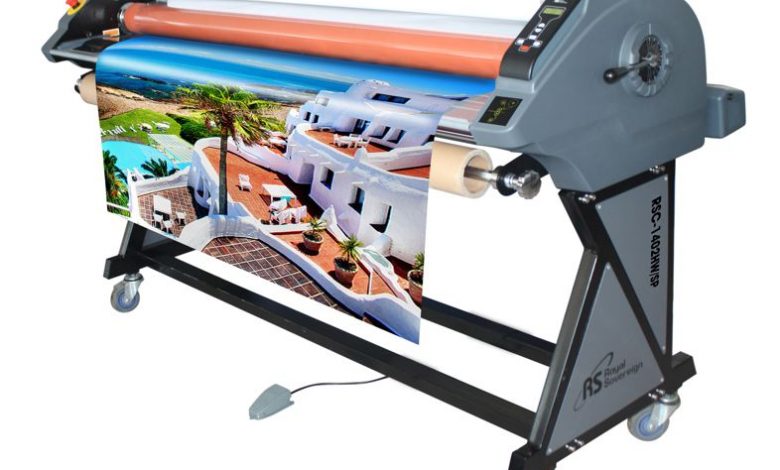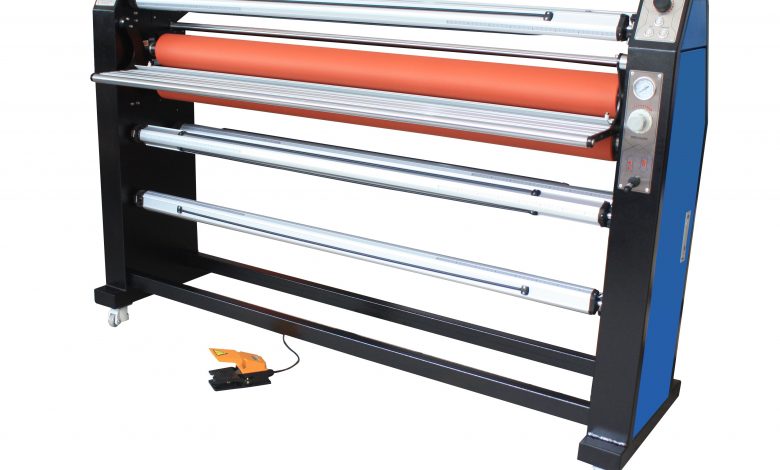Wide-Format Laminators: Evaluating Laminators
Learn how to choose a wide-format laminator that fits your shop's needs.
Considering how much lamination affects your finished print’s durability, longevity and look, picking a new laminator is an important investment. Well-built laminators typically have lifespans of about 20 years, which means your decision will have long-term effects on your business. Choosing the right laminator can even lead to increased revenue, so it’s important to find the right equipment for your needs.
Laminator Considerations
Before even deciding on a laminator model, a sign shop should look for a manufacturer that offers a consultative approach to the sales process, says Tony Caruso, regional sales manager for DeForest, Wisconsin-based Advanced Greig Laminators Inc., a manufacturer of industrial laminators and graphic films. A sign shop’s lamination requirements can vary based on types of printers it runs or the types of printing jobs it completes. Without a proper consultation, choosing the right laminator is a difficult task, and a manufacturer that takes the initiative to understand each shop’s individual situation is more likely to recommend the proper equipment.
Once a sign shop finds a laminator manufacturer it trusts, it should also take a proactive role in the sales process. While a sign shop should want a laminator partner that will take the initiative to understand its unique needs, two-way, open-ended discussion tends to lead to better discovery for both parties. Find out how the laminator manufacturer supports its customers regarding education, ask about the manufacturer’s track record and history, and learn what to expect in terms of customer support following the sale.
“A sign shop needs to ask a lot of questions during the sales process because so many laminators have different configurations,” Caruso says. “We can configure our laminators in a multitude of ways to give our customers the right solution for their needs versus trying to fit a square peg in a round hole.”
When looking at features, width is a major consideration. Carl Hoffman, director of sales at Rockleigh, New Jersey-based Royal Sovereign, recommends trying to purchasing a laminator that matches the width of your widest printer. For sign shops that plan to purchase an even wider printer in the future, match to that width instead. Laminators are a long-term investment, so it’s best to purchase a unit that can grow with you.
In addition to width, gap height is an important consideration for mounting, Hoffman says. Most 54- to 65-inch laminators in today’s market have at least an inch gap opening. Hoffman also suggests analyzing whether the laminator’s maximum speed can keep up with your inkjet or offset printing demands.
“Consider if you will be doing short run or long-length lamination runs,” Hoffman says. “With long-length runs, consider a laminator that has a rear rewinder. This is particularly important for vehicle and fleet graphics.”
Get the Most Out of Your Laminator
For the most efficient lamination, a sign shop should take the time to receive proper training on its laminator, Hoffman says. Lamination requires a certain skill set. Every operator needs to understand the proper speeds and temperatures for using a laminator and how to efficiently use the machine, but some operators are not well-versed in how to get the most out of their laminator. Ultimately, this often results in wasted material, which hurts a sign shop’s bottom line.
“We find that many people do not know or were not fully trained in the best practices of webbing a laminator,” Hoffman says. “They are having difficulty or are wasting material with this process. There should be very little material used at setup, and it should only take a short amount of time to web your laminator.”
To avoid waste, Hoffman suggests to use a laminate that is the same width as the media. This also eliminates any challenges that come with a laminate hanging past the sides of the media. If the day’s lamination jobs require multiple laminate surfaces, the operator should also group like-surface images together on the printer for most the efficient lamination workflow.
Space can also be an issue for sign shops when it comes to lamination. Every shop only has so much square footage to work with, and space can become tight quickly when you’re producing many wide-format graphics. For better use of space, Michael Osman, president of CWT Worktools USA, a signage equipment manufacturer, recommends sign shops include an application table with a work bench in their setup, which reduces the amount of space a shop needs for lamination.
“Let’s say I’m a new shop just starting up, and I just bought a laminator,” Osman says. “If I’m going to feed a 4′ x 8′ board into the laminator, I need 8 feet of board space at the entrance, and then I need 8 feet at the exit of the laminator as well as 2 feet for where the laminate sits and the operator stands, so I’m using 20 feet of space. Instead, I can put a 5′ x 10′ application table in that same spot to save 10 feet of space.”
An application table also allows a sign shop to work more efficiently because it can better handle multiple jobs, Osman says. For instance, if a sign shop’s roll-to-roll laminator is tied up with a car wrap, the operator can allow that unit to continue running but use the application table to mount and laminate other jobs. Looking forward, sign shops can also expect to see an application table model that comes with a heat-assisted laminator to allow for a smoother lamination without silvering. This advancement should be available by summer 2019.
Making a Profit From Lamination
With the right laminator in place, a sign shop can also use this equipment to increase revenue, Caruso says. Not only does a laminator protect the graphic but it can also add a texturized finish. This gives the graphic a high-end look and differentiates it from other images in the marketplace. Clients are often willing to pay for those benefits for long-term as well as short-term graphics.
“Laminators are a great upsell opportunity even for short-term graphics,” Caruso says. “While a short-term graphic obviously wouldn’t be out in the public for an extended period of time, the laminate still enhances (the) graphic. You can put a semi-gloss finish on a graphic to cut down on any reflections or glare, or if the graphic is in a high-traffic area, you can put a textured finish on it to minimize fingerprints.”
Finding the right laminator for your shop requires some proactive research, and developing a relationship with a trustworthy manufacturer goes a long way in ensuring you pick the best unit for your unique needs. Given the longevity of a good laminator, your decision will have a lasting impact on your business.
“A laminator is a long-term investment that is great for maximizing profitability,” Caruso says. “If you purchase the right piece, it can be considered a once-in-a-lifetime purchase, and you’ll be prepared for future printer evolutions.”




